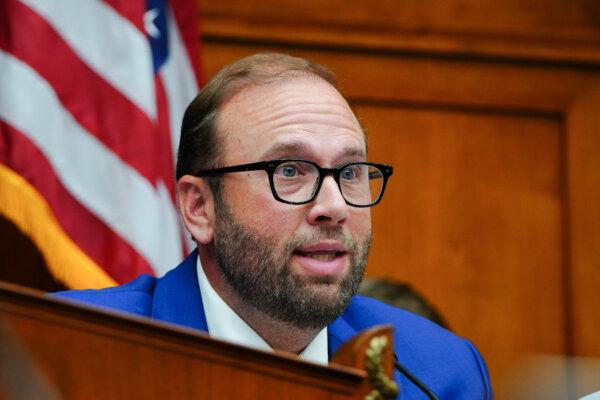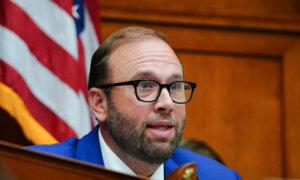Republicans champion certainty of tax law extension, while Democrats worry about cost.
Over the next few months, lawmakers will be examining data, studies, and expert analysis when debating whether to extend the 2017 Tax Cuts and Jobs Act (TCJA). The House Ways and Means Committee held a hearing on Jan. 14 to speak with individuals affected by the tax law.
Rep. Jason Smith (R-Mo.), chairman of the House Committee on Ways and Means, said making then-President Donald Trump’s tax cuts permanent provides families and small businesses with clarity, ensuring they will not face a massive tax bill.
While the tax brackets will headline discussions, hearing witnesses concentrated on specific provisions of the tax legislation.
Alison Couch, owner of Ignite Accounting and Business Advisors, told the hearing on Tuesday that her firm and clients are making plans based on the taxes they expect to pay, but uncertainty is weighing on their decisions.
She urged Congress to move swiftly to make the 20 percent small business deduction permanent.
“I have practiced public accounting for 21 years, and can tell you without a doubt that the 20 percent small business deduction has been the single most beneficial tax deduction for small business owners,” Couch said.
Margaret Marple, a mother from Lynchburg, Virginia, urged officials to support the child tax credit provision within the TCJA.
“Making the child tax credit expansion within the tax cuts and Jobs Act permanent would assure parents like me that our value to this country will not be forgotten as parents persevere,” Marple said in prepared testimony.
The TCJA raised the maximum value of the child tax credit to $2,000 per child under the age of 17.
Pro-growth provisions from the tax bill could harm the manufacturing sector, said Courtney Silver, president of Ketchie Incorporated, a third-generation precision machine shop.
As part of the TCJA, her company invested $1 million in capital equipment and new jobs and upgraded its technologies and systems.
“Without them, our growth would not have been possible,” Silver said, adding that tax hikes could harm other manufacturers in her industry.
One economist stated that the TCJA was skewed heavily toward the rich rather than working families and that the costs associated with renewal could result in cuts to federal programs that poor and middle-class families rely on.
Brendan Duke, senior director of the Economic Policy Center for American Progress, alluded to billionaire Elon Musk’s Department of Government Efficiency (DOGE) and his proposal to slash $2 trillion in annual spending cuts. This, Duke notes, would cut every program’s budget by about one-third.

Rep. Jason Smith (R-Mo.) speaks during a hearing for an impeachment inquiry into President Joe Biden, in Washington on Sept. 28, 2023. Madalina Vasiliu/The Epoch Times
“We shouldn’t ask middle-class families trying to buy their first home to shoulder the burden of financing tax cuts for millionaires,” Duke said. “This is an especially poor choice when the economy is strong, and unemployment is low like it is today.”
Rep. Richard Neal (D-Mass.), the ranking member of the committee, accused Republicans of borrowing nearly $2 trillion to pay for the TCJA. He said it could add about $4 trillion to the deficit to make the tax cuts permanent.
“I don’t understand the logic of suggesting that we’re going to attack the national debt and simultaneously add $4 trillion to it by a tax cut proposal,” he said.
Assessing the Studies
Millions of Americans have paid lower income taxes since 2018, and trillions of dollars in tax cuts are set to expire without congressional action.
Without the Tax Cuts and Jobs Act updates, individual rates would return to pre-Trump levels this year. This would cause federal income tax rates to rise across the board, with the top rate rising from 37 percent to 39.6 percent.
Lawmakers on both sides of the political aisle will have the various studies assessing the efficacy of preserving Trump’s 2017 tax cuts to digest.
The group’s analysis determined that 5.9 million jobs and $540 billion in wages would be lost and that GDP would suffer a nearly $1.1 trillion loss.
Researchers found that an extension of the individual and estate tax provisions would give the top 0.1 percent of earners a $314,000 tax cut. Households in the top 1 percent of income—a family of two with a cash income of at least $743,000—would receive a tax cut of more than $47,000.
The analysis concluded that the extension would cost $4.2 trillion between 2026 and 2035.
While keeping the Trump-era tax cuts intact would boost overall consumer spending in 2026 and 2027 and offset the adverse effects of the president-elect’s tariffs, economists say they would be regressive.
“By lowering Federal income tax, higher earners will see a larger increase in after-tax income, while increased tariffs will raise prices for all consumers,” wrote Alex Mackle, corporate advisory engagement lead at Oxford Economics. “Discretionary consumer spending, which is driven by higher-income households, is therefore likely to benefit more from the tax cuts.”
Other analyses found that the TCJA would provide a measurable economic boost but also add to budget deficits.
It could take months before a bill reaches Trump’s desk.
In an interview with Fox News’ “Sunday Morning Futures,” House Speaker Mike Johnson (R-La.) stated that he aims to have an all-encompassing bill that addresses various aspects of the president-elect’s agenda, including the tax cuts, by April or May.
Original News Source Link – Epoch Times
Running For Office? Conservative Campaign Consulting – Election Day Strategies!


